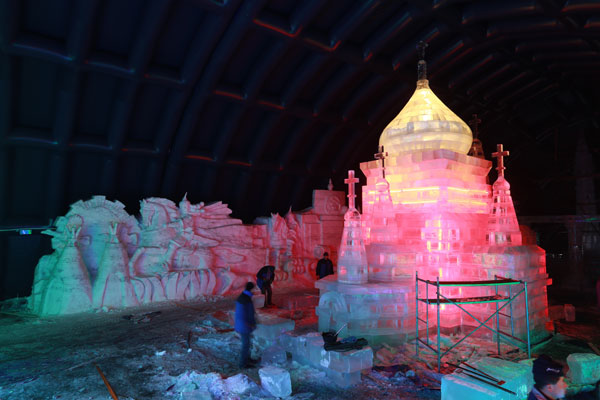

 |
|
Ice lantern masters from Harbin work on the ice sculptures at Workers Stadium.[Photo provided to China Daily] |
Beijing does not have a natural climate for ice lanterns. According to specialists from Harbin, the well-known "capital of ice lanterns", the best ice for sculpting should be formed in the natural environment, the thickness should be above 30 centimeters, and the finished works should be kept at a temperature lower than minus 3 C.
So when people at Workers Stadium decided to introduce Harbin's ice lanterns into Beijing at the end of last year, they came across problems like where to find proper ice materials, and how to preserve the finished ice artworks.
If you visit Workers Stadium now, you will see three huge, inflatable tents on the lanes, the longest of which stretches 120 meters. Inside, 34 refrigerating machines are working day and night, trying to maintain a stable indoor temperature of minus 5 C.
Despite the refrigerating machines, the temperature inside the tents rose when the winter sun peaked at noon, moisture increased on smoggy days, and the number of visitors swelled at night, generating more body heat. As a result, some ice sculptures melted a bit, so that part of the show was shut down.
Stacks of ice, carved into different shapes of buildings, animals, and humans, are present with colorful lights on to highlight the themes: symbolic buildings in both Beijing and Harbin such as the Temple of Heaven, nine dragon pillars in the Forbidden City and Sophia Cathedral, and also Olympic torches and emblems.
"These ice blocks are very good ice, transparent and strong. They were transported from Inner Mongolia, 400 kilometers away," said Yuan Hao, Sports Complex director of Beijing Workers Stadium.